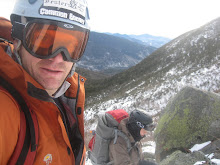I'm recoverying from an L5-S1 herniation with no sciatica, most recently in December.
Following the suggestions in Low Back Disorders, this is the routine I'm doing now. I see alot of suggestions for exercises on the web for low back pain and herniated discs (Mackenzie, bird dogs, etc) but few information on how to incorporate these into long-term recovery. In some ways Low Back Disorders is very specific (how to roll over in bed!) in other ways, it's vague (like what are the rest times between the sequences for the static holds he recommends). This is my best shot.
During rehabilitation, McGill's goal is to improve low back and abdominal endurance (not strength) and groove proper motion and muscle activation patterns. I do this routine twice every day. I focus on form, abdominal bracing (independent of breathing), and glute/hip activation (during squats).
NOTE: "5-4-3" is shorthand for a reverse pyramid of static holds. The long version would look like this:
hold for 7 seconds, rest for 3 seconds --> Do this 5 times
rest 1 minute
hold for 7 seconds, rest for 3 seconds --> Do this 4 times
rest 1 minute
hold for 7 seconds, rest for 3 seconds --> Do this 3 times
move on to next exercise
The beginner's low back routine:
(1) 6 cat/camel motions (not stretches)
(2) 20 "potty" squats (air squats, basically)
(3) 5-4-3 curl-ups (NOT situps)
(4) 5-4-3 L & R side bridges (I do the 5 static holds for left then the 5 static holds for right, then I take a 1 minute rest and move onto the 4 round)
(5) 5-4-3 bird dogs (I do the 5 static hold with left arm out, then the 5 static holds with the right arm out, then I take a 1 minute rest and move onto the 4 round)
(6) 20 more potty squats (air squats)
I've been doing it for about two weeks and I'm increasing the pyramids from 5-4-3 to 6-5-4. I've also started substituting overhead squats (broomstick) for the second set of air squats. Focusing on the glute activation is definetely a help. I'm keeping a log of how my back feels and potential reasons why (four hours sitting in SAR training for instance). Next I'm going to add some stretches for my hamstrings and my hip flexors and see how that feels.
Wednesday, January 20, 2010
Subscribe to:
Post Comments (Atom)

No comments:
Post a Comment